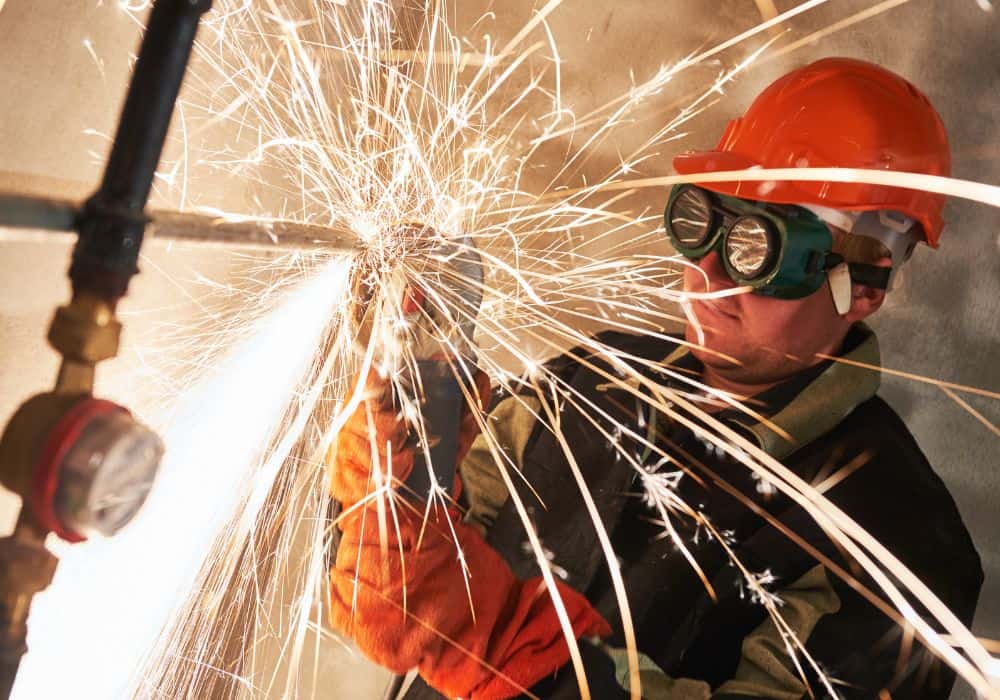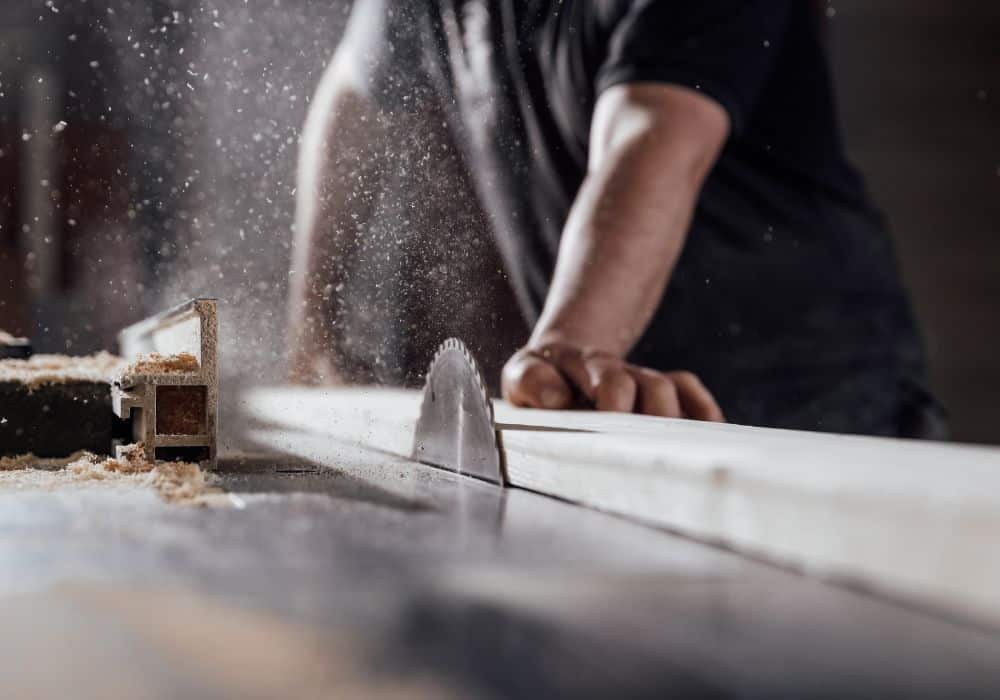Every homeowner has had to think about their pipes at some point in their life. Installing new pipes or just fixing an old leak, it’s important to know what you are doing.
If you’ve ever had to cut a steel pipe, you know how frustrating it can be. Steel pipes are an inexpensive and sturdy way to transport liquids and gases, but they can be a pain to cut.
You have several options if you need to know how to cut a steel pipe. Keep reading to find the best of them and how to do it yourself, at home.
What are steel pipes?
Steel pipes have high strength due to their high density and rigid structure, making them suitable for supporting heavy loads such as water pipes or gas lines.
There are many different types of steel pipe available, but the most common is mild steel. Mild steel pipes have a tensile strength of around 30,000 psi (pounds per square inch), which means they can withstand pressure in excess of 30,000 pounds per square inch without being permanently deformed. They’re not as strong as other forms of steel like stainless steel or carbon steel, which can withstand much higher pressures.
Mild steel pipes are also relatively easy to bend or form into different shapes by heating them up and shaping them with wedges or hammers (called cold working). This makes them ideal for use in construction because it’s easy to make custom-sized sections that fit exactly where you need them.
But cutting these pipes can be difficult because they’re so stiff and inflexible—especially when trying to cut through large sections of pipe with hand tools like saws or chisels!
What should you do before cutting steel pipes?
1. Measure your pipes
The first step in cutting a steel pipe with any of these tools is measuring its length so that you know how much space you have on either side when you start cutting it off at each end with your chosen method (whether it be using hand tube cutters or power tools like angle grinders). You should always measure twice and make sure you have enough material for what you need.
If you have an angle grinder, make sure that the blade is set at a 45-degree angle relative to your pipe. You can do this by lining up the edge of your tool with one of those lines you made earlier and adjusting it until it’s at the right angle (if you don’t want to use a protractor, then just eyeball it). Then go ahead and cut through each side of the pipe.
Make sure your steel pipe is clamped securely to a workbench, so it doesn’t move around as you work, as this will cause imperfections in the cut.
2. Take safety precautions
Always make sure that your blades are sharpened before using them so that they’ll make nice clean cuts without any jagged edges. When cutting through thick pieces of metal like this there’s always potential for injury if proper precautions aren’t taken beforehand. So remember to:
- Wear thick gloves and safety glasses
- Wear sleeve shirts and a face shield
- Keep your body away from the blade and other pipes so you don’t get hit by flying shavings or metal chips
- Make sure that no one gets close enough while you’re working on something heavy like this so they don’t get hurt by accident!

3. Prepare tools
- Flexible blade utility knife/hacksaw/pipe cutter
- Tape measure
- Screwdriver (flat head)
- Pencil
- Wrench (adjustable)
- Safety goggles
- Gloves
- Tape measure (metal tape measure if possible)
The best pipe-cutting tools you can use
If you want to cut steel pipes, then you need to use the right tool. And there are a few from which you can choose.
1. Pipe cutters
Pipe cutters are typically used to cut through a copper or plastic pipe, but they can also be used to cut steel and any kind of metal if the right type of pipe cutter is chosen. The most common types of pipe cutters come in two varieties: manual or electric.
Manual models typically consist of two handles that allow you to pull them apart in order to open the jaws of the tool around your pipe and then squeeze them together again in order to snip them off with sharp blades inside each jaw.
Electric models work similarly but use electricity instead of human force to spread and close the jaws around your pipe (which means less effort on your part).
The process will be quick and easy, but it may leave some burrs behind on the edges of your cut. You’ll also want to use gloves or some other protection for your hands because this tool is quite sharp.
2. Angle grinder
Angle Grinders are very powerful tools—it’s true that they’re designed for cutting metal, but they can also be used to cut other materials like wood and plastics. In fact, many people who have been using angle grinders for years say that they have never had a problem with them cutting steel pipe.
If you’ve ever tried using an angle grinder to cut steel pipe before, then you know that they can be difficult to control. However, this isn’t necessarily true for all angle grinders. There are some models that are specifically designed for cutting steel pipe and other metals like aluminum or copper. If your model doesn’t come with these features built-in then there may be an adapter available online or at your local hardware store that will allow you to use it on iron pipes as well as steel ones.
3. Hacksaw
The third option is to use a hacksaw. This tool is a little more precise but harder to use than the previous one. You’ll need a high-quality tool designed specifically for cutting steel pipe and other similar materials.
It looks like a mini-saw with a handle attached to one end. The blade is on the other end of the handle, and you can use it to saw through your pipe, which creates smooth edges that won’t need any further processing once you’re done cutting them off from their original shape.
4. Circular saw
First of all, remember that the blade on your circular saw is only good for cutting things with a diameter of 1/2 inch or less. So if you have anything larger than that—say a 3/4 inch diameter pipe—you’ll need another tool for this job.
The first step is to determine if your circular saw has any teeth on the blade. If it does not, then you will need to use an abrasive disc or sandpaper on the blade. You can even use an electric drill or a file if needed.
5. Table saw
Steel is a very hard metal that resists bending and cutting. It also has sharp edges that tend to tear at the slightest bit of pressure. So if you try to cut steel with a table saw, it’s not going to be gentle on your hands or your tools—and it will take a lot longer than it would take you to cut wood with a circular saw.
However, if your goal is to use the table saw to make cuts in steel pipes for an upcoming project, then yes—you can definitely do it! You just need to know what kind of cuts you want to make and how deep they should be.

The trick is to use a good quality and very sharp blade. You can find this information on the packaging of your blade or on the website of the manufacturer of your tool. The first thing you need before cutting is a jig. A jig will help you stabilize your steel pipe while you’re cutting it so that it doesn’t move around while you’re doing the job.
Once you have your jig set up properly around your steel pipe, then all that’s left is cutting! Simply clamp your steel pipe into place using clamps, then use your saw blade to make all of the cuts necessary for removing material from around each pipe joint.
The last step before using your pipes
After cutting, sandpaper your metal tubes by hand or with an electric drill or file. This will remove any burrs left over from cutting with your circular saw and ensure that your cut lines are smooth and straight.
Conclusion
There are many ways that you can use to cut steel pipes and all of them have their pros and cons. So we covered several different methods in this article, and it’s up to you which method is best for you.
No matter what tool you choose and in which way you choose to approach this, remember to do it safely and take all precautions needed. If you still have questions, let us know in the comments and we’ll get back to you as soon as possible!
